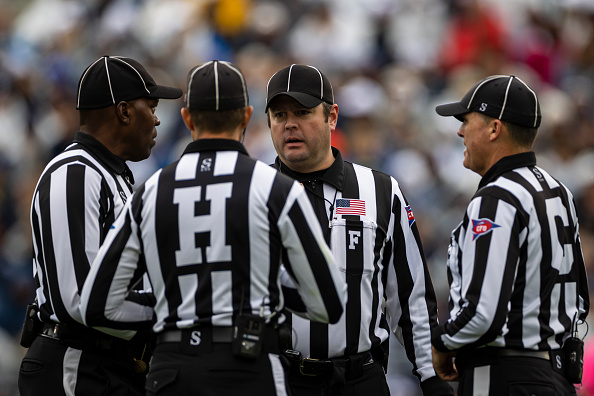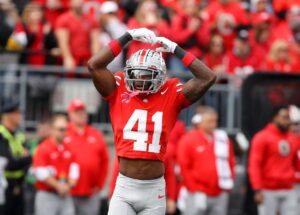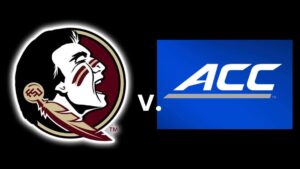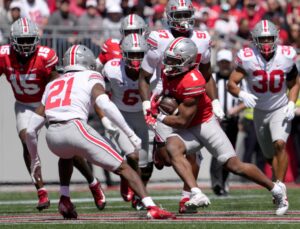The college football season is right around the corner. And with it will be an infinite amount of complaining about missed officiating calls and highway robberies of games. There are several college football rules that need changing to help improve the fall Saturday on-field product.
The NCAA addressed a few rule changes this off-season, including outlawing fake slides (The “Kenny Pickett Rule”), further limiting blocking below the waist, and an appeals process to the National Coordinator of Officiating for second-half targeting suspensions. But the NCAA Competition Committee still has work to do.
College Football Rules That Need Changing
They range from the obvious to the detailed, from things you see every play to strategic acting representing the worst aspects of sportsmanship. And they can affect every game you watch on any given Saturday.
Move The Hash Marks
For some inexplicable reason, the hash marks in college football are spaced differently than in professional football. Now, if they were spaced inside the NFL hash marks, it wouldn’t be an issue. But college hash marks are spaced outside of NFL hash marks, making the game harder for college athletes.
A quick primer. A football field, both college and professional, is 160 feet wide. In the NFL, the hash marks are spaced the same as the width of the goal posts — 18 feet, 6 inches apart. In college football, the hash marks are 40 feet apart. That’s over twice as far apart as their professional counterparts.
Kicking Game
This obviously affects kickers. Anyone who has passed high geometry can see that college kickers have to consider the angle as much as the distance when attempting a field goal. This becomes even more of a math problem when you add in wind and tough angles closer to the goal line. Not only is kicking a field goal noticeably and obviously more difficult in college football, it gets harder the closer you get to the goal line, once you’re in your kicker’s range. That makes absolutely no sense at all.
Defense
But it also affects the defense as well. That’s because the ball is spotted on the nearest hash mark any time it is downed outside the hash marks or out-of-bounds. That means that the “boundary” and “field” sides of the field are significantly different. In the NFL, the “boundary” (the side with the closest out-of-bounds line) is 70 feet, 6 inches. The “field” side (the side with the further distance to the out-of-bounds line) is 89 feet, 3 inches.
In college football, the boundary side is 60 feet and the field side is 100 feet. Much like the kicking game, this makes playing and calling defenses in college football more difficult than in the NFL. Players have to make sure they can cover the extra 11 feet to the field side. Coaches call less blitzes and are more hesitant to try to hide coverages because of this difference.
And if 11 feet doesn’t sound like that much of a difference for a defensive player to cover, please go check-in with a Power 5 outside linebacker or boundary-side safety. Better yet, ask a professional scout how much the difference in hash marks frustrates their evaluation.
Much like the true meaning of the origin of San Diego, no one really knows why the hash marks are spaced at that distance. But it’s painfully obvious that it needs to be changed to mirror the same dimensions as the NFL field markings.
Habitual Injuries and Game Stoppage
As easy and obvious as the first rule change seems, this one is just as hard. As offenses continue to increase tempos, defensive coaches and players are developing more and more “cramps” in order to slow down play and get substitutions into the game. The NCAA attempted to address this in off-season. In typical NCAA fashion, their effort was as futile as a French military defense.
You obviously can’t know for certain if a player is truly hurt or not. But if a team has multiple injuries of the same type during a drive, that demonstrates a systemic team failure. First, any player that leaves the field due to an injury should not be allowed to re-enter the game unless there is an official stoppage of play, not including another defensive injury.
Secondly, after the third “cramping” type injury – an injury deemed to be non-contact in nature by the officials, the defensive team should be assessed one time out for each injury. This does not count as an official stoppage of play for the purposes of re-substitution of previously injured players. A team without injuries will incur a five yard delay-of-game penalty that carries with it an automatic first down.
This should improve team hydration strategies.
Stop Worrying About Blocking Below The Waist
The most overrated narrative in college football is the danger of blocking below the waist. Yet, the NCAA continues to legislate away blocking between the waist. Ask yourself this question: What’s the difference between a defensive player tackling a running back around legs, as they are taught to do, and a running back blocking a linebacker in the flat below the waist? From a physiological perspective, there’s not much difference.
A block should be legal as long as it comes from the front — inside the shoulders and hips — and it doesn’t occur while the defensive player is engaged with a second blocker. Defensive players have a much better opportunity to avoid these types of blocks than offensive players have to avoid low tackles.
Invest in Officiating and Officiating Accountability
College football fans understand that no one is perfect. But college football officiating desperately needs improvement. The conferences make hundreds of millions of dollars annually. Spend more of that money on training and recruiting quality officiating.
Additionally, increase the accountability for officials. Each conference should provide an assessment sheet for each crew after each game. That includes explanations of any plays requested by coaches or media. And the conferences must be transparent with teams — if a crew missed a call or generally had a poor officiating performance, just say it. Again, no one is expecting perfection. But when an officiating crew or replay crew blows an obvious call and the Conference comes out on Monday and says “everything is fine — it was the right call” you lose the trust of administrators, coaches, players, and fans.
And you also open up opportunities for those that seek to profit from a lack of transparency. And that is something that the conference must guard against at all costs.
Time Adjustments
There are between 40 and 60 Football Bowl Subdivision games on each college football weekend. It’s important to ensure that the games don’t suffer the same fate as baseball. Games must stay inside the three-hour window. The average college game in 2021 was 3 hours and 24 minutes. There are three college football rules that need changing in order to keep games moving.
First, reduce the halftime break from 20 to 16 minutes. With coaching staffs growing at all levels, in-game adjustments are far easier now than they were even a decade ago. There are virtually no two-way players in today’s game. And team nutrition staffs have all the tools to keep the team fueled at their disposal on the sideline.
Second, limit official reviews to two minutes. If you can’t clearly determine a clear and obvious reversal in two minutes, then let the play stand.
Lastly, change the clock rules so that the game clock only stops on first downs inside of the last four minutes of each half. If the chain gang can’t keep up with the play, get a new chain gang.
Maintaining the Game
These are the college football rules that need changing in order to keep the game enjoyable. With the amount of change in the structure of the sport at the national level, it’s critically important to keep the on-field product as appealing as possible.






